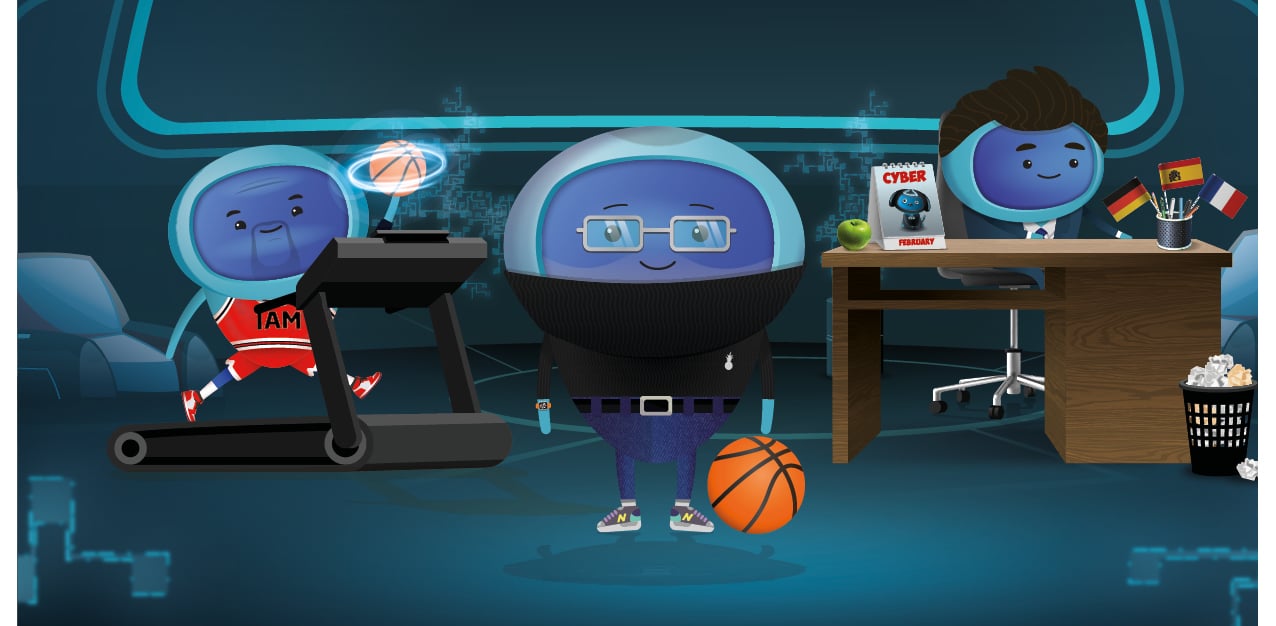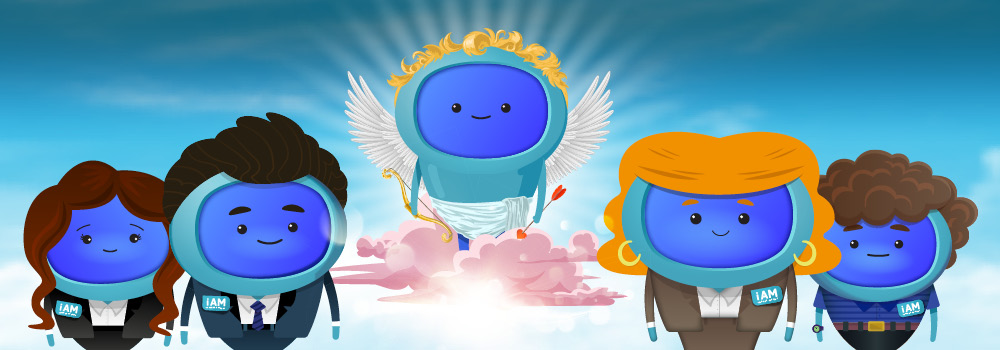We’ve all heard of the term ‘frenemies’ before - you know, when two people pretend to be friends on the surface but actually see each other as some sort of an enemy or rival.
There’s loads of famous ones out there: Jim Halpert and Dwight Schrute, Homer Simpson and Ned Flanders, Paris Hilton and Nicole Richie, Batman and Two Face, Cersei Lannister and Margaery Tyrell. The list could go on and on!
When it comes to L&D, there’s often a frenemy relationship between coaches and the L&D team. Although maybe not quite as extreme as those examples…
Picture this: you've got a great new company-wide learning strategy to improve a wider business problem and achieve the latest goals set out by your CEO. But then, you’ve got a leader who is actively coaching their team on something that is clashing with your meticulous learning design.
Or let’s consider the flip side… you’re a leader who is coaching your team to achieve their own specific objectives - things are going swimmingly and their performance is on the up - only for your L&D department to ask you to prioritise something completely different.
Who wins in this case?
As a coach, you’ll have set KPIs to achieve but as an L&D Manager, you need the coach to support your objectives and help sustain and embed the knowledge. If these two facets of learning are constantly in battle with each other, well the answer to that question is nobody wins. You saw that coming, didn’t you?
So how do you get coaching and learning working together in harmony and finally become friends rather than enemies once and for all? Hold tight, you’re about to find out.
What do we mean by bridging the gap?
There can often be a struggle with getting leaders to attend training or take eLearning courses because, let’s be honest, they have the impression that they know their stuff as industry experts - they’re in the thick of the business and know what’s happening with their team. So when they’re coaching every day, they just assume they don’t need to refresh their knowledge.
But then you have the L&D team who must think more strategically about trying to solve business challenges affecting the company as a whole, and in turn implement additional learning programmes. This can cause learners (and their coaches) to be overwhelmed or be pulled in different directions. Being told to drop everything, despite their own operational targets is quite frankly going to get your leaders’ backs up.
Getting coaching and learning to work together effectively is all about overcoming a big cultural gap. You need to find a balance between the priorities of both leaders and the L&D team so that everyone is driving towards the same end goal. And importantly, ensuring the type of learning programmes on offer work for both the business and for the individuals.
Coaching is a great learning tool but the leaders who are delivering the coaching need to be supported by their L&D team to make sure their efforts are as successful as possible. It all comes down to collective responsibility.
Working together to create a coaching programme for leadership is key. This will inevitably help build trust between both L&D and the coaches and become a hand in hand process. If the leaders are on board from the start, the results will be much better for all. Jennifer Eeles-Gosavi explains a great real-life example of this in our recent webinar on this topic.
How do you stop turf wars and align the goals of L&D and leadership?
With L&D off working in their own darkened corner coming up with new fancy learning design ideas, and Operations focusing on their own departmental stuff, you’re not always going to see eye to eye. And in some cases, you're not even working towards the same goals - which is baffling when you think about it in a business! But it's easily done. So how do you get everyone working together?
Quality vs quantity in learning and development
In L&D, we're very good at talking about quantity: ‘We’ve created x number of new courses’, ‘X number of hours of training has been delivered’, ‘x% more people have logged onto the LMS’… But in reality, they’re just what we call vanity metrics. They don’t actually mean much in the grand scheme of the business. Now we’re not saying these don’t have any value at all, but in this instance they aren’t what we should be reporting our success on.
What you really need to hone in on is the quality of the learning and how it can be actioned within the business. Is it having a direct impact on the business’ objectives? Because ultimately, that’s what operational leaders should be working towards with their coaching, and it should be the objective of the L&D team’s strategy. It’s aligning those goals in the first place to ensure that the learning being created isn’t just churned out for the sake of it, but delivering real results.
Become a more agile L&D team
L&D teams can get a bad rap for not being responsive enough and taking a long time. And if we’re honest, that’s sometimes true. But if you adopt a more agile approach, you’ll find that working relationships with leaders, coaches and learners become much happier.
We’re not saying you have to throw your entire strategy out the window – you still need to work to a plan. Do two to four week sprints where you reassess if your plans are still the right focus and review any new requests that have come your way. If it’s not aligning with your business’ objectives or if it’s not having the desired results, you have the opportunity to change things up.
Working directly with your leadership will take L&D from being order takers to actual strategic partners and really give you a seat at the table.
Get constructive feedback for your learning programmes
Don’t be afraid to make use of the voices within your business. Get direct feedback from your end users so you can understand what is and isn’t working. It can be scary opening that can of worms and inviting lots of constructive feedback and opinions, but it will prove incredibly useful when designing your next programme or if you’re adopting an agile approach.
You’ll be just as likely to find a champion from within the business who will provide positive reviews and explain exactly how your training has impacted those ‘on the ground’ and the results they’ve achieved. There’s nothing more powerful than hearing from your end users.
Know what to prioritise
When you’ve got requests coming in left, right and centre, it can be difficult to know what should be the priority. The managers are feeding back from their coaching sessions, a new important topic has come up in the industry, the board members have shifted their focus – who’s request gets pushed through first?
This comes back to being aligned in your overarching goals as a business. If a request has very little to do with what’s been agreed as the current focus by the CEO or senior leadership team, then it’s an easy no. The objective of all learning, whether that’s via an eLearning course, training day or coaching session, should support the business in achieving those goals.
Opportunity mapping is a great way to align everything back. Does your new request help add value? Is it a new opportunity all together? Does it already exist elsewhere but you need to change tact? Discussing these things with the likes of your senior leadership and key stakeholders can help you make these strategic decisions. If you’d like to know more about opportunity mapping, drop our Product Manager, Phill Lord-David, a message on LinkedIn for a quick chat.
How can we get leadership more involved in learning?
As we’ve mentioned already, the key to aligning your coaches, leadership and L&D function is through collective responsibility. Everyone has a stake in achieving the goals of a business so you all need to work together to make sure you’re talking the same language. But with leadership already having so many different balls to juggle in addition to coaching their teams, what can you do to get them more involved?
Work together from the early stages
If you're building a new learning programme, it’s important that you bring in the managers to support you from the start. You need to make sure that what you’re creating meets the time constraints they’re facing and that they are comfortable with the content itself.
Ultimately, they’ll be responsible for making sure the knowledge and skills being learned are embedded and sustained, so it needs to work for them and their learners. If they feel part of the design process, you’re less likely to receive pushback and have better adoption of the learning.
Whenever you’re designing a solution, make sure you’re factoring in coaching support as part of your overall learning design and not just think of it as something that comes after.
Support your leadership to deliver coaching
Coaching is an expensive resource. When you're talking about leadership level, this is the most expensive time to buy in your business. Which means from a business perspective, you're spending twice as much for every moment coaching is taking up, so you need to make sure it’s done right. Coaching is essentially a high value L&D product, so you must support your leaders by providing them with the skills they need, save them time and effort and make room for it as part of the learning design strategy.
To do this you need to give them the tools they need to coach effectively. For example, if your sales managers are giving coaching sessions in the car because they’re out in the field, how can you document that the conversation happened or refer to previous actions?
As Jennifer Eeles-Gosavi explained in our webinar, this was a real-life issue in a media company. To resolve the matter, they created a coaching portal that could be accessed on an iPad so that they could record sessions and send action plans on the fly. It also helped L&D keep on top of what coaching was happening and make use of that rich data to identify further needs or intervention.
Create a learning culture
Making learning part of the culture and DNA of the business is key. Really working together, doing your investigation work properly and understanding your leaders’ needs is how you can develop that relationship.
Rather than focusing on what you think or want to do as an L&D team, by becoming part of their department it can make such an impact on the learning that is being developed and delivered throughout the business. Sit amongst their team and get to know their world and be part of the conversations first hand. We suggest meeting with them once or twice a week to give you a real understanding.
It’ll also give you that extra level of credibility because you're in the thick of it, you understand their day to day pressures, and you’ve been able to create something they really needed. It wasn't just you building your own big ideas in a darkened room (there we go with the dark room again – can somebody buy L&D a light please?!).
What can L&D do to support leadership and coaching
So it’s quite obvious by this point that L&D and leadership need to work hand in hand, right? Lovely job. Here’s some more tips to help these two factions work together in harmony:
Effective onboarding
A lot of senior leaders and managers are being hired from outside of the business or even the industry – which is great for cross pollination of ideas. But unless you've got a strong management or leadership onboarding programme in place from day one, you could run into trouble.
If someone is brand new to your company and they’re being expected to coach people right away, how can you know they have the right skill set to do so successfully? It’s a big assumption – maybe they’ve never coached before. Having specific onboarding that covers the coaching methods that work for your business objectives will help make sure that your new leaders are singing from the same song sheet.
Give them the right tools in the right way
As we mentioned earlier, leaders have limited time – and that time is expensive. So if you’re implementing a new learning solution or coaching programme you’d like them to follow, then it needs to be delivered in a way that works for them.
A 20 minute eLearning course on coaching skills may not be the best option for many. This group of people may prefer to listen to a podcast in the car on the way home or at the gym.
We’ve also found that for time-poor leaders, something like a quick article link of relevant curated content from industry experts could be much more impactful and suitable to their needs.
At iAM we’ve created a new Leadership and Management collection, which we’ll be releasing very soon. This collection will include a series of short agile resources aimed at developing the core skill sets of your managers and leader. We've had great feedback during our initial trials so get in touch if you’d like to find out more!
Find out why they need something not what they need
Henry Ford once said: “If I had asked people what they wanted, they would have said faster horses.” People can easily describe a problem they're having and what they think they want, but not necessarily know what the best solution is.
As an L&D team you have a responsibility to dig deeper into an issue your leaders are having and look for that root cause. A great technique you can use to do this is the ‘5 whys’. Put yourself in the shoes of your leaders, look at the initial issue and keep asking yourself ‘why’. There’s a great example of this in play in our recent blog ‘What to do with a Ghost Town LMS’.
Once you’ve drilled down far enough and established the real problem, you can tailor your learning solutions to help solve it.
Bringing coaching and learning and development together
If there’s one thing we can confidently say, it’s that it’s definitely possible to end the battle between coaching and learning. In fact, we’d go as far as saying that by working together, you’ll create a fantastic learning culture in your business. You just need to do the ground work through:
- Setting aside the L&D ego – it’s not just about creating the latest and greatest new thing. You need to focus on what you can do to support your business as a whole and factor in coaching or mentoring when designing your learning solutions.
- Embracing collective responsibility – speak to your people and include them in the design process. Find out their pain points and challenges so together you can identify the root issues and create learning solutions that leaders really need.
- Practising what you preach – sometimes as an L&D professional you can focus so much on the learning of others that you can overlook the need to improve your own skills to help you navigate this increasingly complex environment. Don’t forget your own personal development.
- Building your coaching foundations – if you don’t have the expertise inhouse, hire externally for initial coaching training to make sure you have an effective programme in place. That way you will develop great coaches and create internal knowledge that you can leverage in the future with new leaders.
If you’d like to learn more about how to bridge the gap between coaching and learning, catch up on our full webinar that is now available to watch on demand. iAM’s Product Manager, Phill Lord-David, is joined by our COO, Tom Moore, Senior Instructional Designer, Tom McDowall, and independent coaching and learning expert, Jennifer Eeles-Gosavi, to discuss their own experiences as both coach and learner, and explore how these two important facets of learning can work together effectively to achieve your business goals.




